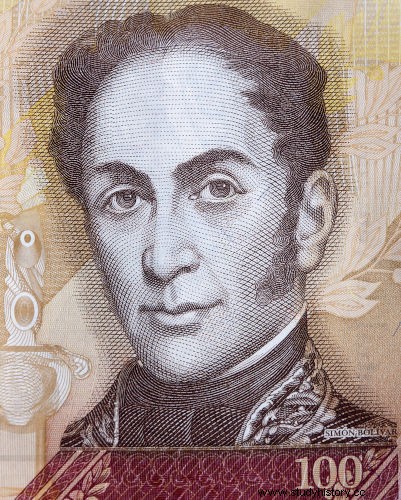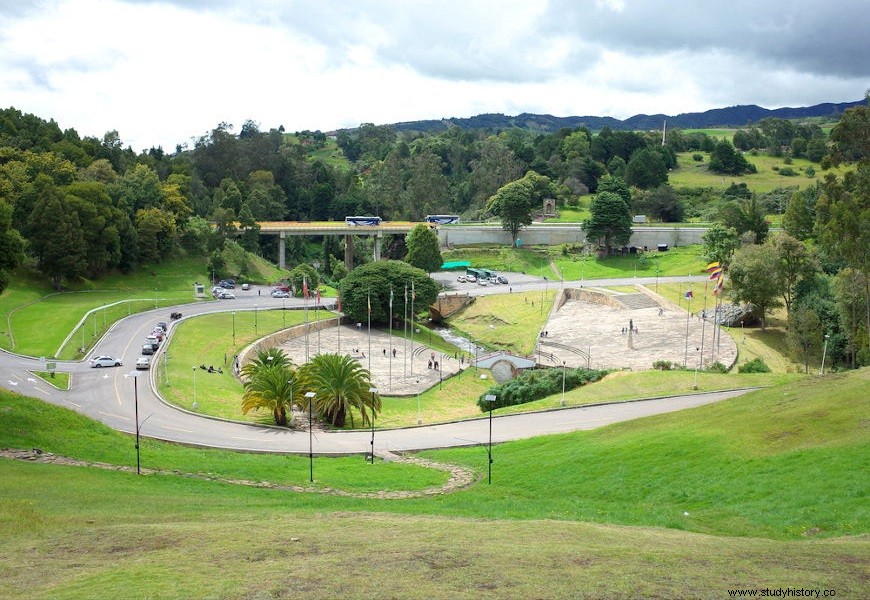Simon Bolivar was one of the best-known names in South American history. He was a military man, belonging to a family of Venezuelan aristocrats, who led independence movements in five countries:Venezuela, Colombia, Ecuador, Peru and Bolivia. Considered a good military strategist, Bolívar became known as a “liberator”.
During his youth, Bolívar swore an oath that he would fight for the independence of the Spanish-American nations. The military also gained recognition for defending a project of territorial unification of South American countries against foreign powers. He implemented this project through Gran Colombia, but failed in his attempt.
Login also :Independence of the countries of Hispanic America – understand the context
Youth and education
Simón José Antonio de la Santísima Trinidad Bolívar Palacios Ponte y Blanco was born on July 24, 1783, in Caracas, Venezuela. At the end of the 18th century, Venezuela was a Spanish colony and was part of the Captaincy General of Venezuela . The family into which Bolívar was born was wealthy and belonged to the local aristocracy.

Bolivar and his family were criollos , therefore, were direct descendants of Spaniards who were born in America. Bolívar's family was wealthy, as they owned copper and silver mines, farms producing sugar and cocoa, and owned thousands of slaves. However, Bolívar's wealthy childhood was also complicated by the death of his parents.
His father, Juan Vicente Bolívar, died in 1786, when Bolívar was only two years old, and, in 1792, when he was about to turn nine, his mother, María de la Concepción Palacios y Blanco, also passed away. Thus, Bolívar's guard passed through different tutors, the main one being his uncle Carlos Palacios y Blanco.
Throughout his youth, the tutors who stood out the most in Bolívar's education were Simón Rodriguez and Andrés Bello . During the period that Bolívar was in Europe, he was also tutored by Jerónimo de Ustáriz y Tovar , Marquis of Ustáriz and a person who held important positions in Spain at the end of the 18th century.
At the age of 14, Bolívar had his first military experience when he joined a battalion in the Valles de Aragua region, northern Venezuela. In 1799, he traveled to Spain to further his education. It was during this period that he was tutored by the Marquis of Ustáriz. Another highlight of this trip was that on it Bolívar met María Teresa Rodríguez del Toro Alayza .
María Teresa was the daughter of a family of criollos who belonged to the aristocracy, as well as Bolivar. He met her in 1800, betrothed in August of that year, and married her on May 26, 1802, in Madrid, Spain. Shortly after the wedding, Bolívar and his wife returned to Venezuela. There, she contracted fever yellow and died on January 22, 1803.
After the death of his wife, Bolívar made another trip to Europe, passing through Spain, France (where he witnessed the coronation of Napoleon Bonaparte as emperor) and Italy, where he had one of his former tutors, Simón Rodríguez, and where he took an important oath that defined his entire life. Finally, during this trip, Bolívar was in the United States.
Revolutionary Life
An important starting point for Bolivar's trajectory as a revolutionary was the Oath of Monte Sacro , held in Italy on August 15, 1805, when he was 22 years old. At that moment, Bolívar promised to dedicate his life to the cause of the liberation of the Spanish-American countries.
In 1807, he returned to Caracas, and when he arrived, he saw Venezuela in social upheaval. The unrest that affected the Spanish colonies in America was a direct result of the problems that Spain faced in Europe. In that year, Spanish King Ferdinand VII had been deposed by Napoleon Bonaparte. In place, he took on Joseph Bonaparte, Napoleon's brother.
The weakening of Spain, the influence of recent events in the local memory, such as the American Revolution, in addition to the spread of Enlightenment ideals, soon turned the agitation in Venezuela into a movement for independence. On April 19, 1810 , a joint revolutionary was formed in Caracas, marking the beginning of the struggle for independence. Bolívar did not participate in this action, as he was on one of his farms in Aragua.
Login also :Summary of the main events of the Napoleonic Era
Bolivar as “liberator”
Bolívar quickly joined the revolutionary movement and was sent to London on a diplomatic trip to gain British support for the Venezuelan cause. In London he kept in touch with an important Venezuelan revolutionary, Francisco de Miranda , managing to make him return to his country of origin.
In 1811, Bolívar's involvement with the independence process in Venezuela was intense. He participated in the Society Patriotic , an institution that emerged to fight for independence, and that same year he participated in its first battle. After the proclamation of the First Republic da Venezuela and some military victories, royalist forces (loyal to Spain) retook Venezuela and forced Bolívar to flee.
He first settled in Curaçao and then moved to Cartagena, New Granada. From Cartagena he wrote the Carthagena Manifesto, in which he analyzed the mistakes made in Venezuela that led to the ruin of the First Republic. He also organized a small force that fought against royalists in New Granada.
Finally, Bolívar began a march that had as its final destination the city of Caracas. This march started in Cúcuta, on the border between New Granada and Venezuela. When he conquered Mérida, he was welcomed as a hero in the city and called a “liberator” by the population. On August 6, 1813, Bolívar enters Caracas. Thus begins the period of the Second Republic of Venezuela , but in December 1814 it is overthrown.
In 1814, he left for New Granada to gain support from the government there and ended up participating in struggles in support of the Grenadians. In 1815 he left New Granada and settled first in Jamaica and then in Haiti. In Jamaica he wrote one of his most famous documents:the Letter da Jamaica .
In this document, Bolívar explained his understanding of the reasons for the revolutionary cause, relating it to the fact that the Spaniards had broken the existing “social contract” with America. Furthermore, he exposed the importance of uniting the South American nations into a single nation as a way of safeguarding the sovereignty of the South American people.

In 1816, he returned to Venezuela in order to win her back. He had the support of soldiers made available by the Haitian president, Alexandre Pétion. In Venezuela he freed the slaves, conquered Angostura and established the Third Republic . In 1819, he set out to liberate New Granada, winning victory in the Battle of Boyacá, on August 7th.
Next, the Republic of Colombia was enacted , better known as Grand Colombia , as it brought together the territories of Ecuador, Colombia and Venezuela. Throughout his life, he still participated in the independence of Peru and Bolivia. Peru was even invited to be part of Gran Colombia, but the Peruvian authorities did not accept.
Login also :The Black Jacobins and Haiti's Independence
Last years
From 1819 to 1830, Bolivar held the presidency of Gran Colombia . The project of territorial unification of the South American nations, which he had applied in that nation, failed. The political interests of each region and the differences of the political elites with the way in which Bolívar governed made this project succumb.
Pressures under Bolivar and his disenchantment with the direction of Gran Colombia made him resign to the presidency on March 1, 1830. That same year, Bolívar contracted tuberculosis which led to his death on December 17, 1830. The following year, Gran Colombia dissolved into three nations:Colombia, Ecuador and Venezuela.
